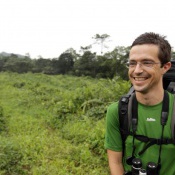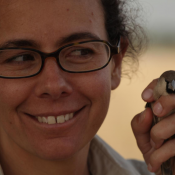Sexual selection and disease: untangling the links between genetic diversity, parasite diversity, immunity and development of secondary sexual traits
Parasite resistance, or immunity, is considered central to explain the population dynamics of wild populations, reproductive investment, and the evolution of secondary sexual characters. Nonetheless, the determinants of immunity in natural populations are poorly known. Work done mostly on poultry has shown that immunity has a strong genetic component. This is also expected in wild populations. Under this assumption, it has been proposed that secondary sexual characters are an honest signal of genetic parasite resistance and that fast parasite evolution is expected to maintain host genetic diversity.
This project aims to determine the relative roles of genetic and environmental components of immunity in three insular bird populations, which differ in their levels of genetic diversity and the diversity of parasite that they are exposed to. Specifically we aim to determine 1) if parasite levels increase with island size, 2) whether immune response is higher where parasite diversity is higher, 3) whether an individual's immune response is primarily explained by its degree of inbreeding or parasite loads, 4) the relationship between sexual ornaments (plumage brightness and song complexity) and parasite levels, immunity and heterozygosity.
The study is being carried out on the Príncipe seed-eater (Serinus rufobrunneus), an endemic species of three Gulf of Guinea islands with different sizes: São Tomé (880 km2), Príncipe (140 km2) and Boné do Jóquei (0.3 km2), an islet off Príncipe. Genetic diversity of the three populations has been estimated with the use of 14 microsatellite markers. Results indicate that the three populations are isolated and that island size is a good predictor of genetic variability, while in addition there is considerable variability within sites. Data on immunity (PHA assay) has been obtained in a sub-sample of these birds. Morphological data is available for all birds and an analysis of feather coloration has been carried for a sub-sample. Molecular screening of all birds for the presence and identification of parasites from the ‘avian malaria’ group (Haemoproteus, Plasmodium, Leucocytozoon) has already been done; in the future we hope to extend this screening to trypanosomes and nematodes.

